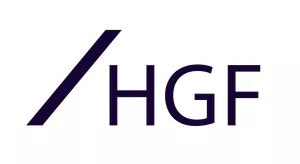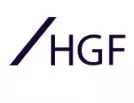- within Intellectual Property topic(s)
- in Australia
Director Squires Vacates PTAB § 101 Rejection in DeepMind Case
In a notable early move as Under Secretary of Commerce and USPTO Director, John Squires has vacated a Patent Trial and Appeal Board (PTAB) decision that had introduced a new § 101 rejection against a DeepMind patent application on machine-learning methods (Ex parte Desjardins, Appeal 2024-000567, App. 16/319,040). The decision, issued through the Appeals Review Panel (ARP), signals a possible policy shift in how the USPTO approaches patent eligibility for AI-related inventions. Full decision: USPTO PDF (Sept 26 2025)
The case
The DeepMind application concerned techniques for sequentially training machine-learning models to improve efficiency and reduce "catastrophic forgetting." While the examiner had rejected the claims under § 103 for obviousness, the PTAB went further, adding a new § 101 rejection sua ponte, finding the claims to be directed to an abstract mathematical algorithm without a practical application.
On review of the PTAB's decision, the ARP (Director Squires, Acting Commissioner for Patents Wallace, and Vice Chief Judge Kim) vacated the new § 101 ground, finding the PTAB's reasoning "overbroad." While acknowledging that the claims included mathematical concepts, the panel held that the invention as a whole integrated the abstract idea into a practical application, improving how a computer (here, a machine-learning system) functions. The ARP highlighted concrete benefits such as reduced storage needs and improved computational efficiency, invoking Enfish v. Microsoft to confirm that software improving computer functionality can be patent-eligible.
Director Squires further emphasized that §§ 102, 103 and 112, not § 101, should serve as the primary gatekeepers of patentability. He warned against categorically treating AI or machine-learning inventions as inherently abstract, noting that doing so risks undermining U.S. technological leadership.
The Context: USC §101 and the Mayo/Alice Framework
For more than a decade, USC §101 patent eligibility for software and AI has been governed by the Mayo/Alice test initially laid out by the Supreme Court, which asks:
- Is the claim directed to a judicial exception (law of nature, natural phenomenon, abstract idea) devoid of practical application? (this is referred to as "Step 2A" in the USPTO's MPEP, see [MPEP 2106])
- If so, does it include an inventive concept – elements that amount to "significantly more" than the exception, transforming the idea into patent-eligible subject matter? (Known as "Step 2B" in the MPEP)
Under this framework, many AI and data-processing claims have been deemed abstract, often reduced to a "mathematical algorithm performed on a generic computer." PTAB panels and examiners have applied this test inconsistently, sometimes dismissing genuine technical improvements as mere automation.
Squires' intervention reflects growing frustration, shared by industry and parts of the judiciary, that § 101 has become an overly subjective barrier to protecting genuine software innovation. In particular, the ARP criticizes the PTAB's reasoning of equating "any machine learning" with an ineligible algorithm, and demands that panels and examiners properly engage precedent like Enfish [Enfish, LLC v. Microsoft Corp., 822 F.3d 1327, 1339 (Fed. Cir. 2016)] which already recognized that "[m]uch of the advancement made in computer technology consists of improvements to software that, by their very nature, may not be defined by particular physical features but rather by logical structures and processes".
The ARP's decision aligns with recent USPTO guidance encouraging examiners to recognize technological improvements described in the specification as part of the "practical-application" analysis. See also USPTO Eligibility Guidance 2024 Update.
The European view
Interestingly, the corresponding European patent of the DeepMind patent family was granted by the EPO (EP3485432B1). During prosecution, following the standard approach in Europe, the EPO first considered that the training method per se was a non-technical mathematical method but that its implementation on a computer conferred a technical character to the invention making it de facto patent-eligible subject-matter.
However, after acknowledging the novelty and potential inventive step of the method, the EPO considered the existence of an inventive technical effect applied to the training method in terms of its integration into a practical application, noting in particular that: "the claim should be formulated in a way that the technical effect is clearly defined [and] directed to a real world task in which the mathematical method serves [...] a technical purpose."
Notably, the granted claim comprises additional features reciting, inter alia: "The machine learning model generates the output based on the received input image [...] wherein the [...] machine learning tasks comprise different image recognition tasks [requiring] the recognition of different object or pattern in an image provided to the machine learning model to generate an [...] output".
An alignment with European patent law?
Unlike the conventional approach of the USPTO, the European Patent Office applies a "technical character / technical effect" approach rather than an abstract-idea test. While "mathematical methods" and "computer programs as such" are excluded under Art. 52 EPC, an invention that produces a further technical effect, for instance, improving a processor or optimizing resource use, may be patentable. See EPO Guidelines G-II 3.3.1 (2025).
Thus, whereas the US often filters claims at the eligibility stage, the EPO typically proceeds to inventive-step analysis once technical character is established. The EPO framework is perhaps more rigorously structured, the main question being whether the claimed contribution is technical.
Therefore, the recent ARP decision moves the USPTO slightly closer to the European model by emphasising technological context over categorical exclusion.
Why the Decision Matters
- Recognition of AI as a Technical Field
The ARP acknowledged that innovations in model architecture or training methods can constitute technological improvements, not just abstract mathematics. This aligns AI closer to other computer-implemented technologies (e.g., database management or data-storage design) which courts have found to be patent eligible.
- Strategic Policy Implications
This move fits within broader U.S. policy emphasizing support for AI leadership and innovation. It mirrors Congressional interest in clarifying § 101 and could pave the way for more formal USPTO rulemaking or revised AI-specific guidance.
- Practical Lessons for Practitioners
Applicants should frame AI inventions in terms of technical improvements, such as reduced computational load, enhanced accuracy, or resource efficiency, in a way which clearly ties the technical effect to the claim elements. Specifications should clearly set out how these improvements arise from the claimed features of the invention.
Conclusion: A Policy Recalibration?
Although limited in scope, the present decision signals a symbolic shift in USPTO policy. Director John Squires appears intent on softening the PTAB's strict § 101 stance by affirming that AI inventions should be judged by their technical contributions, not dismissed as abstract. The Appeals Review Panel underscored this, warning that "excluding AI innovations from patent protection in the United States jeopardizes America's leadership in this critical emerging technology" and clarifying that the key question is whether the invention achieves a specific technological improvement. This approach reflects a broader U.S. effort to support domestic AI innovation and keep patent policy aligned with global competitiveness.
The content of this article is intended to provide a general guide to the subject matter. Specialist advice should be sought about your specific circumstances.


